
Considerations for Teacher Wish Lists
According to Education Week a federal watchdog estimates that 41 percent of school districts or 36,000 schools need to update or replace heating, ventilation, and air conditioning systems in at least half their schools, underscoring a significant infrastructure need for schools as they tackle coronavirus or what’s commonly referred to as COVID-19 this school year.
The Centers for Disease Control and Prevention released long-awaited guidance to help schools reopen, and among the recommendations is that schools should “ensure that ventilation systems operate properly” and should increase ventilation of outside air by opening windows and doors, unless it creates concerns for students with asthma.
Portable HEPA Filters
A temporary solution for classrooms is to have a portable HEPA filter to help clean the air. COVID-19 has presented teachers with an array of new challenges. And with the 2020 back-to-school season just beginning, educators are being forced to find ways to tackle remote learning or make their classrooms socially distance-friendly while working to ensure that learning experiences aren’t degraded.
Books About Germs and Proper Hygiene
Books about germs and proper hygiene such as how to properly wash your hands may come in handy for all ages. If students are in secondary education and interested in learning more about what Hobson Plumbing & Heating is all about or interested in the trade business, HVAC training books might be a nice option.
Gift Cards
Give the gift of choice digitally for supplies such as bacterial disinfectant/wipes, hand sanitizer, dedicated refillable water bottles, and more! Let teachers, nannies, caregivers, etc. know you appreciate their hard work with a gift card applicable to many retailers, including popular food services, online retailers, and more. Websites such as Giftogram or Gift Card Mall are great places to start!
You don’t have to be an expert on HVAC systems to find a skilled technician. If you need to schedule an appointment to service your own HVAC unit, please contact us today!

5 No Cost Ways to Boost Savings at Home
Energy efficiency means using less energy, reducing your home’s energy waste, and saving money. To effectively increase your energy efficiency involves more than just using less energy – it requires you becoming aware of how energy is used, where it’s wasted, and how it can be used more effectively and efficiently in everyday life. These top tips will help your home or business save energy and be more efficient.
Reduce hot water temperature.
Set your water heater to the “normal” setting or 120, unless the owner’s manual for your dishwasher requires a higher setting. Savings are 7-11% of water heating costs.
Use the right amount of cold water when washing clothes.
About 16% of an average home energy bill goes toward heating water. Most detergents perform better in cooler temperatures. Be sure to set the water level appropriately for the size load that’s being washed.
Take a five-minute shower instead of a bath.
Take a five-minute shower instead of a bath to reduce hot water consumption.
Use your ceiling fan.
Ceiling fans help keep you comfortable not only in the summer. If your biades are still reversed from the winter, flip the direction of the blades so it pushed cooler air down into the room. Fans should turn clockwise in the summer and counter-clockwise in the winter.
Keep vent space clean & clear.
Make sure heating registers, vents and cold air returns are not blocked by draperies, furniture or rugs. In fact, keep then closed or blinds turned facing upward during the summer to help keep your home cool.
If you’re looking for additional savings for your home, visit Energy Star and begin by entering your zip code.
If you’re interested in Hobson Plumbing & Heating performing any of your Plumbing/HVAC inspections in order to increase savings, contact us today to schedule an appointment.
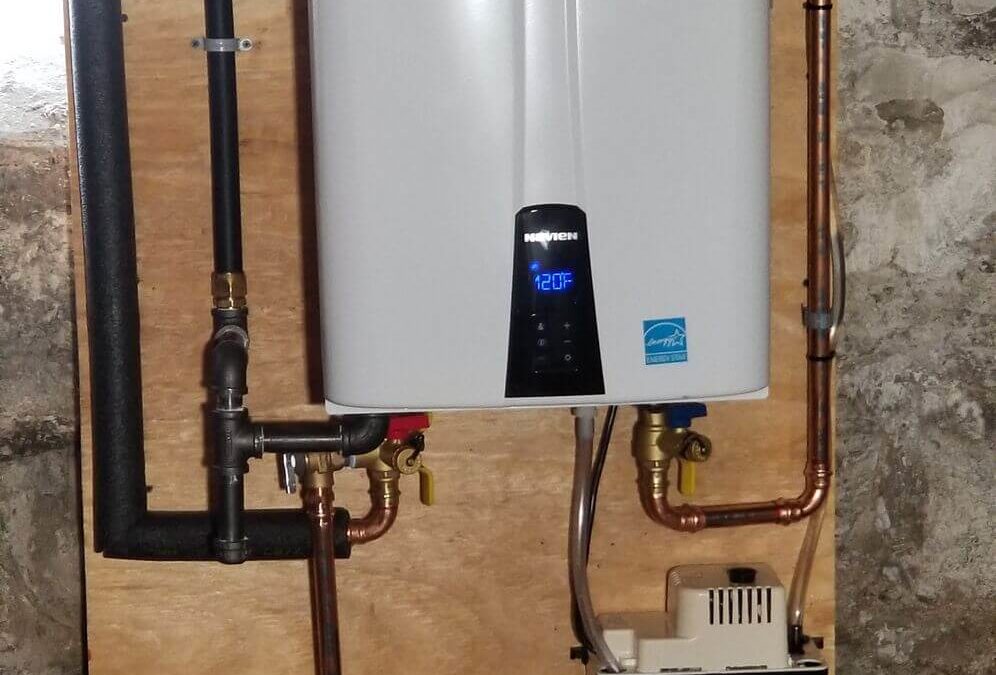
What Size Tankless Water Heater Do I Need?
When it comes to tankless water heaters, size really does matter. If you have a unit installed that’s too small, you won’t have enough hot water to meet your household’s needs. On the other hand, an over-sized unit will cost more to purchase and operate than what’s needed, nullifying one of the biggest benefits of tankless water heaters—energy efficiency! Rest assured, as an essential business we are open and taking very necessary precautions to ensure your safety upon entering customers’ homes by sanitizing thoroughly on a daily basis, hand washing prior to and after calls, carrying gloves and masks on all trucks, social distancing, and more.
In a nutshell, the tankless water heater size must be just right to meet household demand. In a previous blog, we walked you through four signs you may need a new water heater. Consider the two factors that go into sizing a tankless unit so you know what to install in your home if you do in fact you are in need of a new unit.
FLOW RATE
The flow rate is how much hot water the tankless unit can produce, in gallons per minute (gpm). You want the unit you install to provide a high enough flow rate to meet your household’s needs. Keep in mind that tankless water heaters will typically limit your family to one or two hot water activities at a time, depending on the size of the water heater you install.
Examples of efficient, low-flow hot water plumbing fixtures include:
- Bathroom sink faucet – 1.0 gpm
- Shower-head – 2.5 gpm
- Bathtub faucet – 4.0 gpm
- Kitchen faucet – 1.5 gpm
- Dishwasher – 1.5 gpm
- Washing machine – 2.0 gpm
Now, determine how many of these hot water fixtures you expect to use during peak times in your household. For instance, if you have two bathrooms and want two people to be able to take a bath at the same, you’ll need a flow rate of around 8 gpm, depending on the precise flow of your bathtub faucet. Similarly, if you want two people to be able to take a shower at the same time, you will need around 5 pgm.
TEMPERATURE RISE
Knowing the flow rate you want is a good place to start, but that’s not all you need to know. You need to consider the temperature of the water when it goes in and how hot it should be when it comes out. This is known as the temperature rise. Seasonal shifts change the water temperature coming, but when sizing a tankless water heater, you need to know the average groundwater temperature in your region.
There are helpful resources such as USGS where you can find the groundwater temperature (in degrees) for your area. The temperature you want at the tap ranges from 102 degrees for the bathtub and shower to 120 degrees for the dishwasher and washing machine. Starting with 52-degree water, this means you need a tankless unit capable of delivering a temperature rise of 50 to 68 degrees.
TANKLESS WATER HEATER SELECTION
As you shop around for tankless water heaters, you’ll see their sizes are listed as a flow rate and temperature rise combined. Both of these factors are critical to consider when finding the appropriate sized tankless water heater. If you need assistance selecting the appropriate unit for your residence or business, we’re here to help!
SCHEDULE TANKLESS WATER HEATER INSTALLATION
The water heater experts at Hobson Plumbing & Heating can help you determine the proper tankless water heater size for your family’s needs. We perform all the calculations to help you determine the right unit for your household’s needs when it comes to purchase price, performance, and energy efficiency.
If you move forward with the tankless water heater installation, we can assure you our experts at Hobson Plumbing & Heating come highly recommended for the job. We are fully trained, licensed, certified, and bonded, and our plumbers are background-checked and drug-tested for your peace of mind. We have a proven track record of providing excellent plumbing service to our residential and commercial customers in the Chicagoland area.
Call Hobson Plumbing & Heating today at 630.761.3400 or contact us to schedule a tankless water heater consultation.

Extend The Life Of An Air Conditioner
Now more than ever, homeowners in the Chicagoland area are always looking for ways to save money and air conditioner maintenance will help save you money now and down the road. Keep your air-conditioner maintained and you’ll not only save money on energy, but you’ll also extend its lifespan, saving money on costly early replacement. The best time period to use these tips is just before each cooling season begins which is now!
Your Heating, Ventilating, and Air-Conditioning system (HVAC) will consist of either a furnace and AC or a heat pump, which both heats and cools. Both types will have an interior unit (evaporator and blower) and an exterior unit (condenser coil and compressor).
5 Easy Steps For Your Whole-Home Air-Conditioner:
Step 1: Turn Off The Power
The dangers of working around electricity and the air-conditioner’s moving parts make it important to completely turn off power to the unit.
Step 2: Remove The Gunk
On the exterior condenser/compressor, remove the fan cage. Using a screwdriver or wrench, remove the fasteners and lift the cage or fan grill away from the top of the unit. Remove any funk or debris such as leaves from the interior.
Step 3: Clean The Fins
By removing the outer covers, you can use a brush attachment on a shop vacuum to remove dirt. Then, using a gentle stream from a garden hose, spray through the fins from the inside out to remove any build-up or debris from between them. Never use a pressure washer as the pressure can damage the fins. A fin cleaning spray available at most home improvement stores may be necessary for tough to clean fins.
Step 4: Straighten The Fins
Since any reduction in air-flow through the fins can reduce efficiency, carefully straighten bent fins using a dull knife or fin-straightening tool available at most home improvement stores. It’s imperative to be gentle so the tubing in the fins doesn’t get damaged in the process.
Step 5: Level The Unit
Over time and especially around newer home construction, the pad upon which the condenser unit sits can begin to tilt as the soil settles beneath it. Al condenser unit that’s not level can cause the compressor within it to fail. Check the condenser for level and use rot-resistant shims to bring it back to level.
If you’re interested in Hobson Plumbing & Heating performing any of your HVAC inspections in order to increase savings, contact us today to schedule an appointment.

Improving Energy Efficiency In Your Home
Energy efficiency has big benefits for homeowners in the Chicagoland area.
One benefit is to live in a more eco-friendly way. Eco-friendly is about being smarter with energy use such as with your plumbing and HVAC. In fact, when it comes to your plumbing and HVAC, what may have been installed previously in your home may not have been energy efficient. There are also ways to eat and consume more eco-friendly products. In honor of Earth Month, we felt it was a great time to share 4 eco-friendly and energy-efficient methods.
Eco-Friendly Household Products
What if there was an app that could help you find safe, healthy, green, and ethical products with product reviews based on scientific research and ratings? Good news, there is! GoodGuide’s scientists’ rate products on a zero to 10 scale for their health, environmental impact, and social impact. The ingredients, health impacts, and certifications contribute to the health rating.
Low-Flow & Dual-Flush Toilets
Low-flow toilets perform just as well as traditional toilets but are 20% more energy efficient. A new standard toilet uses about 1.6 gallons per flush, not to mention older toilets that can use as much as 8 gallons per flush. A low-flow uses as little as 1.3 gallons.
A dual flush toilet allows you to press one button for a low power flush that is sufficient for liquid waste and another button the provides a full flush to rid the bowl of solid waste. Since most flushes (3 ½ out of 5 average daily flushes) are for liquid waste, this can be a big difference.
As with low-flow toilets, the financial impact of the switch is not huge, however, a dual flush toilet conversion kit will only cost you as little as $22, so you will quickly experience a return on your investment.
Low-Flow Shower Heads
Showerheads are measured by flow (i.e. the number of gallons they deliver per minute [gpm]). Water pressure affects flow, measured in pounds per square inch (psi). The greater the pressure pushing water through pipes and showerheads, the greater the volume of water forced out.
The trick will low flow showerheads is to use less water but maintain water pressure. If you can do this, you will use less water in the same length shower and maintain the water pressure needed to say wash shampoo out of your hair for instance.
There are two ways to do this. Aerating showerheads mix air into the water in order to maintain constant pressure while using less water. Non-aerating showerheads use pulses to keep the stream strong while maintaining a constant temperature. Either of these reduces water consumption, making the shower more green friendly and the bill more wallet-friendly.
Tankless Water Heater
There are many benefits to a tankless water heater. Our blog post back in February covered the signs you might see if you’re in need of a new water heater. When considering a new tankless water heater, there are two eco-friendly aspects to consider. First, the units are longer lasting (20-25 years compared to as little as 5-7 from traditional tanks) and smaller so they fill up landfills less. Secondly, tankless units use less natural gas. This also allows for some savings by homeowners.
The more relevant direct benefit to homeowners is the unlimited hot water, which can be a real luxury during the colder months here in the Chicagoland area! Hobson Heating and Plumbing is here to help if you’re considering energy-efficient plumbing, HVAC improvements in your home, or repair service 24x7x365. Contact us today!
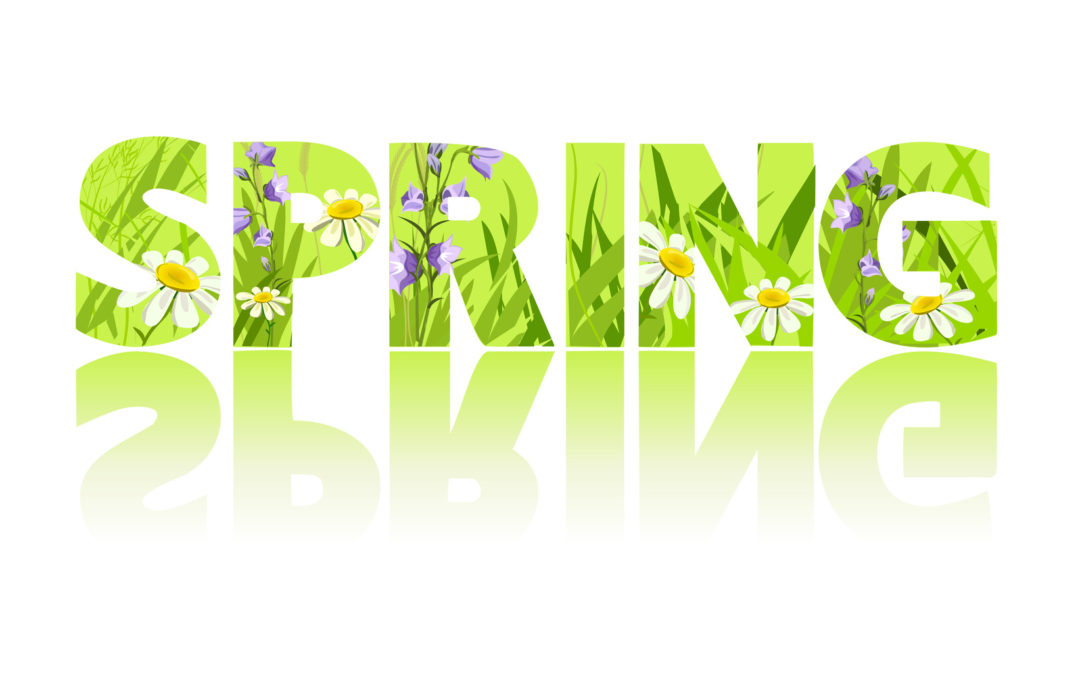
Spring Plumbing & HVAC Tips
Hobson Plumbing & Heating services the tri-cities area with professional residential & commercial heating, air conditioning, and replacement services.
When you are searching for plumbers in the Chicagoland area who offer quality service at affordable prices, you won’t find a better company. We are a family-owned, full-service plumbing and HVAC service provider providing everything you need in the way of Chicago plumbing service or repairs to your home or business equipment.
If you’re preparing to check your home or business plumbing for any wintertime damage, we’re here to offer you some spring plumbing tips for maintenance and repair. There are repairs you can make yourself, and then there are those that require the knowledge, expertise, and skills of a professional.
3 Spring Plumbing Tips
- To check for leaks, drop some food coloring into your reservoir tank; if your toilet bowl water changes color, you have a leak.
- No water should drip or flow from faucets that are turned off, and water should flow freely when faucets are turned on. Check both inside and outside your home for leaks around faucets.
- Place a plastic bag of plain white vinegar around your showerheads to dissolve mineral deposits that can build up during the winter months. Leave the bag in place overnight, then remove it. Water should flow freely when the shower is turned on.
3 Spring HVAC Tips
- Change indoor filters often; at a minimum, at the start of every new season (quarterly). If you live in a dusty area, changing filters once a month is recommended.
- Check for dirty coils on A/C units, and remove any dust or dirt buildup to increase your unit’s efficiency during the hot summer months.
- Check thermostat settings and use energy-saving settings when possible. If you have an old, nonprogrammable thermostat, set the heat to 68 degrees at night and 78 degrees during the day to conserve energy.
If you suspect you have a leaky system or detect water damage, mold, or mildew, call a professional plumber to evaluate your plumbing system. Hobson Plumbing & Heating is here to help 24x7x365. Call us today at 630-761-3400 to schedule an appointment for service or repair. We will also evaluate your current plumbing and HVAC system.
We Provide Plumbing & HVAC services in Kane and DuPage counties. Be sure to keep our number nearby so you can call on us when you need a professional to take care of an emergency repair day or night.
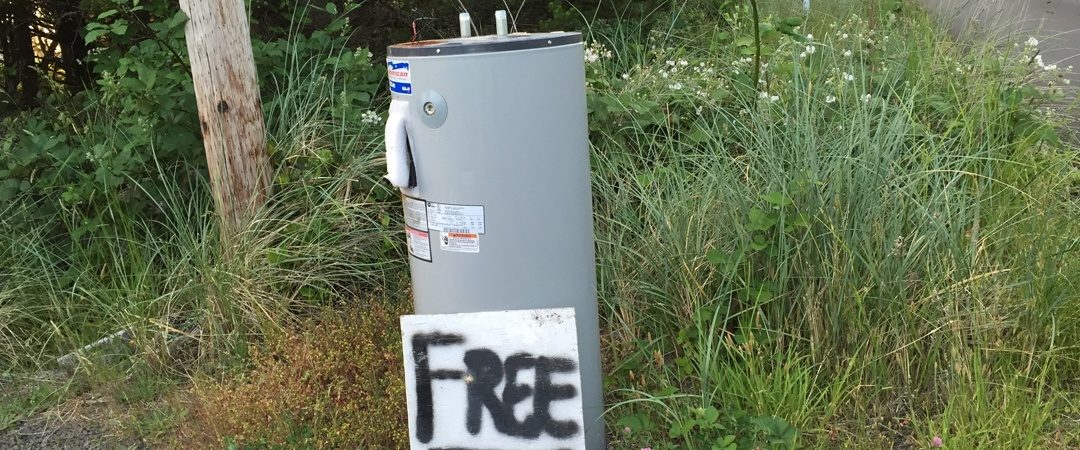
Why You Need A New Water Heater
February was a particularly cold month in the Chicagoland area, with temperatures dropping as low as 17 degrees! While some days were more tolerable, the nights had us curling up under our comforters.
This is why a constant supply of running hot water is imperative. This isn’t possible if your water heater doesn’t function properly. Showering with cold water in the winter is uncomfortable to say the least!
Here are four signs that mandate a replacement:
If Your Water Heater Unit is Old
If you can’t recall when you bought your water heater, it’s probably old enough to have outlived its life. If you want to be sure of its manufacturing date, you can look up the serial number on the manufacturer’s sticker. If it’s more than ten years-old, you need to start looking at new models, as it will likely start malfunctioning soon. If you already know it’s time or you think you may need to replace your water heater unit, contact Hobson Plumbing & Heating today!
Rusty Water
If the water that’s coming out of your plumbing fixtures is brown or rusty, it’s possibly due to the fact that the inside of the water heater has corroded. However, this isn’t all there is to this problem. It won’t be long before the corrosion eats away at the metal, and the water heater unit starts leaking.
Before you get your water heater replaced, you need to be sure that the rusty water is in fact coming from the heater. In order to investigate this, turn on the hot water and fill up a bucket. Repeat the process with cold water and then compare the water. If the hot water is rusty, you likely need a water heater replacement.
Insufficient Heating
You shouldn’t have to wait in the shower for the water to get warm enough or rush through it because the hot water runs out. If your heater is not heating enough water, it’s time to call Hobson Plumbing & Heating. Sediment builds up over time and lines the water heater. This conceals the heat source and water fails to heat up or does too slowly. If the problem persists after repairs, again you likely need a new water heater.
Rumbling Noise
The sediment at the base of the heater gets reheated each time the heater is turned on. This eventually hardens the sediment, which bangs against the sides while the unit is turned on and the water is being heated. This can cause cracks or holes to form in the unit if the problem persists. Even though leaks show up later, the noise is an early giveaway that your water heater needs to be replaced.
Are you looking for a 5-Star plumbing company that can repair or replace water heaters in DuPage or Kane counties and provides a 100% satisfaction guarantee? You’ve come to the right place. Call us for your plumbing and heating services by clicking here.
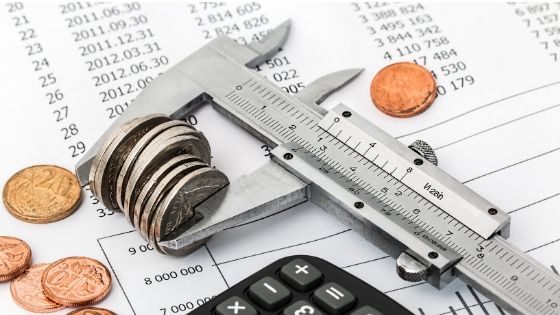
2019 Homeowner Tax Credits
Tax credits reduce the amount of income tax you owe to the Fed or the state of Illinois.
Credits are generally designed to encourage or reward certain types of behavior that are considered beneficial to the economy or the environment. Did you make any of the improvements listed below in 2019? If so, you can claim the credits by filing Form 5695 with your tax return according to Turbo Tax. The renewable energy tax credits are good through 2019 and then are reduced each year through the end of 2021. Please consult a tax professional for assistance. Hobson Heating & Plumbing is here to assist with identifying which products you purchased from us are eligible for tax credits.
5 Residential Renewable Energy Tax Credit Qualifiers
- Solar-powered water heaters. The water heated by the system must be used inside the home, and at least half of the home’s water-heating capacity must be solar. (Solar heaters for swimming pools and hot tubs do not qualify.)
- Solar panels, or photovoltaics, for generating electricity. The electricity must be used in the home.
- Wind turbines that generate up to 100 kilowatts of electricity for residential use.
- Geothermal heat pumps that meet federal Energy Star guidelines.
- Fuel cells rely on a renewable resource (usually hydrogen) to generate power for a home. The equipment must generate at least 0.5 kilowatts of power.
Eligible Equipment and Materials
The first is “qualified energy efficiency improvements,” and it includes:
- Home insulation
- Exterior doors
- Exterior windows and skylights
- Certain roofing materials
The second category is “residential energy property costs.” It includes:
- Electric heat pumps
- Electric heat pump water heaters
- Central air conditioning systems
- Natural gas, propane or oil water heaters
- Stoves that use biomass fuel
- Natural gas, propane or oil furnaces
- Natural gas, propane or oil hot water boilers
- Advanced circulating fans for natural gas, propane or oil furnaces.
If you’re interested in replacing or installing any of the items listed above in order to increase energy savings for the current year, contact Hobson Plumbing and Heating today to schedule an appointment.

What You Need to Know About Carbon Monoxide
Carbon Monoxide (CO) poisoning is entirely preventable. Protect yourself and your family by learning the symptoms of CO poisoning and how to prevent it. Carbon monoxide, a poisonous, colorless, odorless, and tasteless gas responsible for more than 50,000 visits to the emergency room every year, can pose a danger from unanticipated sources in your home, including fireplaces, water heaters, and generators. Improper ventilation of fuel-burning appliances and exhaust from running automobile engines in attached garages are ordinarily associated with dangerous carbon monoxide levels. Another potential cause of carbon monoxide in your living space is your furnace.
How to Recognize CO Poisoning
The most common symptoms of CO poisoning are headache, dizziness, weakness, nausea, vomiting, chest pain, and confusion. People who are sleeping or who have been drinking alcohol can die from CO poisoning before ever having symptoms.
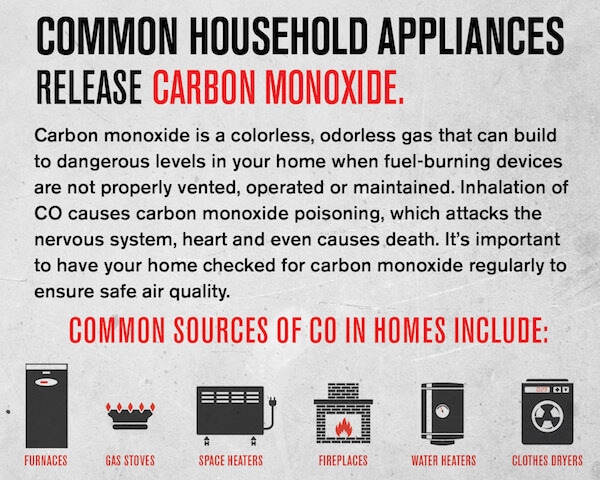
What is a heat exchanger and why is it essential?
A furnace’s heat exchanger is a metal component that transfers heat from the fuel being burned while preventing the air in your home from mixing with the furnace exhaust. Sometimes the heat exchanger fails, either from cracks produced by continual expansion and contraction due to heating and cooling of the metal or from rust. When a heat exchanger fails—under certain conditions—the exhaust gases, including carbon monoxide, can combine with the air in the house. A properly functioning furnace should not generate significant levels of carbon monoxide; however, a cracked or leaking heat exchanger can pose a safety danger.
What are the hazards connected with a cracked heat exchanger?
A cracked heat exchanger could let exhaust gas from the furnace to contaminate the household air with exhaust gases including carbon monoxide. In order for this to happen, the furnace must be giving off high levels of carbon monoxide and the exhaust gas must be joining with the household air. This could lead to serious illness and even death.
What are the signs of a cracked heat exchanger?
Apart from a visual inspection to establish a crack, there are a few signs of a potential problem with your heat exchanger that you may notice. If you turn the heat on and the flames flicker and appear devilish, this could be a signal that circulated air from the furnace is getting into the combustion area and you should have it checked by one of our HVAC technicians. By taking the necessary precautions, you can typically avoid signs of trouble including carbon monoxide detectors sounding and you or your family members feeling sick, lightheaded or nauseous. To ensure the safety of all occupants, all homes should have a working carbon monoxide detector and batteries should be replaced routinely.
How can I be positive that my heat exchanger really has failed?
Service technicians at Hobson Plumbing & Heating have received specialized training in diagnosing a cracked heat exchanger. Additionally, an expert technician will test both the home and furnace for carbon monoxide. A properly operating furnace should not generate significant levels of carbon monoxide. Hobson Heating & Plumbing technicians can also review the dangers associated with the failed part and offer professional consultation regarding the next steps.
What happens after a Hobson Plumbing & Heating HVAC technician diagnoses a cracked heat exchanger?
Once you have a confirmed diagnosis from one of our experts, your first question will likely be whether the part can be repaired or if a replacement is the only option. Unfortunately, the industry standard is that the heat exchanger must be replaced.
If my heat exchanger has failed, do I have to replace the furnace?
While it may end up making sense to replace the furnace as opposed to only the heat exchanger, that is not always the case. Furnace warranties can vary—most furnaces have a 10-year warranty on the heat exchanger, while some are covered for 20 years or even for the life of the furnace. Hobson Plumbing & Heating technicians can help you investigate the warranty on your heat exchanger and provide all the information you need to decide if replacing the heat exchanger or the entire furnace is right for you. Visit our website at Hobson Plumbing & Heating to learn about all the services we offer 24x7x365.
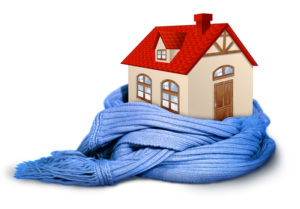
Tips Before Turning On The Heat
After a super hot summer, many homeowners really look forward to the cooler months of the year. After all, it’s fall y’all! At some point, your heating system will come into play and that’s when things will really heat up. Before you turn on your heater for the new season, follow these tips:
Turn On the Pilot Light
It’s been a while since your heat has been up and running and there’s a good chance that your pilot light needs to be lit again. If you don’t know how to do this yourself or want to have your system checked at the same time, be sure to give Hobson Heating & Plumbing a call.
Hire a Qualified Technician
Heating systems are built to last, but they still need to be serviced if you hope to keep them running efficiently and effectively for as long as possible. An inspection by a qualified technician should be scheduled once per year to make sure this happens. Call us today at 630-761-3400 to schedule an inspection.
Clean or Replace the Air Filter
When the air filter gets dirty, your system won’t run as well as before and contaminants will make their way back into your air. You can prevent this by cleaning or replacing the air filter every 1-3 months, depending on how quickly it gets clogged up.
Test your Alarms
Every home should be equipped with multiple smoke alarms and at least one carbon monoxide alarm per story. You can test each one by pressing a small button that’s usually located on the front of the unit and be sure to replace the batteries, even if they aren’t dead yet.
If you need assistance with your heater or any other home comfort questions, reach out to the professionals at Hobson Plumbing & Heating. We serve North Aurora and the surrounding areas. Visit our website to learn more or call us at 630-761-3400.
